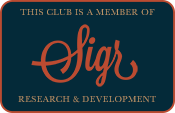Contractor Safety Orientation Checklist: A Comprehensive Guide
When it comes to contractor safety, proper orientation is crucial. New contractors need to be well-versed in a company`s safety policies and procedures to ensure a safe and secure working environment. A contractor safety orientation checklist can serve as a valuable tool to ensure that nothing is missed during the orientation process.
Here is a comprehensive contractor safety orientation checklist that you can use to make sure your contractors receive the best possible orientation:
1. Emergency Procedures
Emergency procedures should be the first item on your checklist. All contractors should be familiar with the emergency procedures in place, including evacuation routes, fire extinguishers, and other safety equipment. Make sure that your contractors also understand who to contact in case of an emergency.
2. Hazard Communication
Hazard communication is another important aspect of contractor safety orientation. Contractors should be made aware of any potential hazards present in their work area, including hazardous materials, chemical substances, and other hazards. Provide them with safety data sheets and ensure that they understand how to properly handle and dispose of any hazardous materials.
3. Personal Protective Equipment (PPE)
Personal protective equipment (PPE) is another critical aspect of contractor safety. Ensure that your contractors fully understand the types of PPE that they need to wear and how to properly use and care for them. Show them where they can find the necessary PPE and explain the consequences of not wearing it.
4. Worksite Rules and Regulations
Every worksite has its set of rules and regulations. Contractors must be aware of these rules and regulations before they begin work. Ensure that your contractors understand the work hours, breaks, and other company policies.
5. Job-Specific Safety Training
Job-specific safety training is essential for every contractor. You must provide job-specific training, including any specialized training, such as working at heights, confined space entry, or operating heavy equipment. Make sure that you provide detailed training and any necessary certifications.
6. Health and Wellness Policies
Health and wellness policies are essential to ensure that all contractors are healthy and fit for work. You should provide information on any health and wellness policies regarding hygiene, food, and drug policies, and any other relevant policies.
7. Communication
Effective communication is critical in ensuring contractor safety. Make sure that the contractors know who to contact if they have any safety concerns or face any safety issues. Provide them with contact information for safety managers, supervisors, and other relevant personnel.
In conclusion, a contractor safety orientation checklist is a crucial tool for ensuring that contractors understand the safety policies and procedures of your company. By using this comprehensive checklist, you can ensure that your contractors receive a thorough orientation and are equipped to work safely. Remember: safety comes first!

